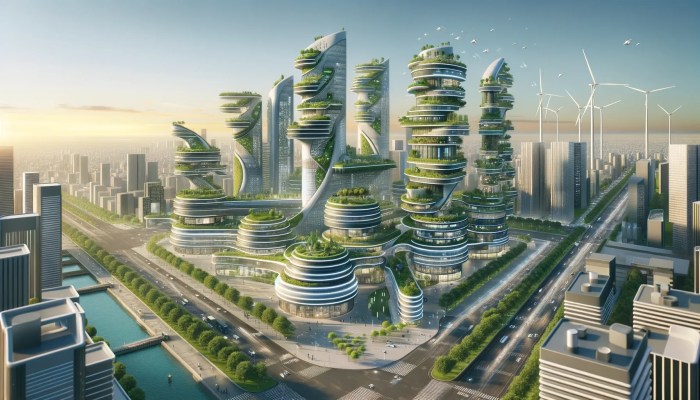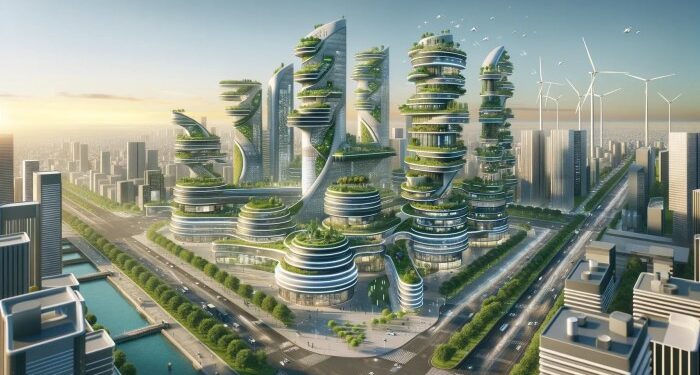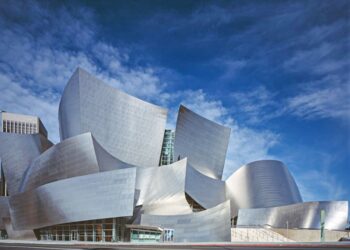As we look ahead to 2025, the landscape of sustainable architecture is set to undergo remarkable transformations. From innovative materials to cutting-edge technologies, this article delves into the exciting trends shaping the future of eco-friendly building practices. Join us on a journey through the latest developments in sustainable architecture that are poised to revolutionize the way we design and construct buildings for a more sustainable tomorrow.
Sustainable Materials
In 2025, sustainable architecture is expected to heavily rely on innovative materials that prioritize environmental impact and longevity. These materials play a crucial role in reducing carbon footprint and promoting sustainable practices within the construction industry.
Bamboo
Bamboo is anticipated to be a prominent sustainable material in 2025 due to its rapid growth rate and renewability. It is a versatile material that can be used for structural elements, flooring, and cladding. Bamboo's strength-to-weight ratio is comparable to steel, making it a durable and eco-friendly choice for construction projects.
Recycled Plastic Composites
Recycled plastic composites are gaining popularity as a sustainable alternative to traditional building materials. These composites are made from recycled plastics and other materials, reducing waste and promoting a circular economy. They offer excellent durability and resistance to weathering, making them ideal for exterior applications.
Cross-Laminated Timber (CLT)
Cross-laminated timber (CLT) is expected to continue its rise as a sustainable building material in 2025. CLT is made from layers of timber boards glued together in perpendicular directions, offering strength and stability comparable to concrete and steel. It is a renewable resource that sequesters carbon, making it a popular choice for eco-conscious architects.
Energy-Efficient Design
In the realm of sustainable architecture, energy-efficient design plays a vital role in reducing the environmental impact of buildings. By incorporating innovative technologies and strategies, architects can create spaces that are not only eco-friendly but also cost-effective in the long run.
Passive Solar Design
Passive solar design is a key trend in energy-efficient architecture, utilizing the sun's energy for heating and lighting. Features like large south-facing windows, thermal mass materials, and shading devices help optimize natural light and heat, reducing the need for artificial lighting and heating.
Green Roofs
Green roofs, or living roofs, are another innovative technology that enhances energy efficiency. By covering roofs with vegetation, buildings can improve insulation, reduce heat gain in the summer, and absorb rainwater, leading to lower energy consumption for heating and cooling.
Solar Panels
Solar panels continue to be a popular choice for energy-efficient buildings, converting sunlight into electricity to power various systems within a structure. Advancements in solar technology have made these panels more efficient and affordable, making them a sustainable option for many architects.
Smart Building Systems
Smart building systems integrate technology to optimize energy use, such as sensors that adjust lighting and heating based on occupancy or weather conditions. These systems can significantly reduce energy waste and lower operational costs for building owners.
Impact on Carbon Footprint
Energy-efficient design has a direct impact on reducing the carbon footprint of buildings. By using less energy from non-renewable sources, architects can help lower greenhouse gas emissions and mitigate the effects of climate change. Incorporating energy-efficient features into buildings is a crucial step towards creating a more sustainable future.
Green Roofs and Living Walls
Green roofs and living walls are essential elements of sustainable architecture that offer numerous benefits in terms of environmental sustainability and energy efficiency. Incorporating green roofs and living walls in building designs helps reduce the urban heat island effect by providing natural insulation, which in turn lowers energy consumption for heating and cooling.
These green features also absorb rainwater, reducing stormwater runoff and improving water quality. Additionally, green roofs and living walls create habitats for wildlife, improve air quality, and enhance the aesthetic appeal of buildings.
Benefits of Green Roofs
- Improved insulation and energy efficiency
- Reduced stormwater runoff
- Enhanced biodiversity and habitat creation
- Improved air quality
Benefits of Living Walls
- Natural air purification
- Reduced ambient temperatures
- Noise reduction
- Enhanced aesthetics
Process of Integration
Integrating vegetation into building structures involves installing a specialized waterproofing membrane, a drainage layer, a growing medium, and the vegetation itself. The design must consider factors such as weight load, irrigation systems, and maintenance requirements to ensure the long-term viability of green roofs and living walls.
Environmental Advantages
Green roofs offer superior insulation properties compared to traditional roofing systems, reducing the need for artificial heating and cooling. They also help mitigate the heat island effect in urban areas, contributing to a more sustainable and environmentally friendly built environment.
In contrast, traditional roofing materials absorb heat and contribute to higher energy consumption for cooling purposes.
Smart Building Technologies
In sustainable architecture, smart building technologies play a crucial role in optimizing energy consumption, improving building performance, and enhancing overall sustainability.
IoT and Automation Systems
IoT (Internet of Things) and automation systems are utilized to efficiently manage energy consumption within buildings. These systems can automatically adjust lighting, heating, and cooling based on occupancy levels, weather conditions, and other factors. For example, smart thermostats can learn occupants' preferences and adjust temperature settings accordingly, reducing energy waste.
Data Analytics for Building Performance
Data analytics is essential for monitoring and analyzing building performance metrics in real-time. By collecting and analyzing data on energy usage, indoor air quality, and other factors, building managers can identify areas for improvement and implement strategies to enhance sustainability.
For instance, data analytics can help optimize HVAC systems, reduce energy waste, and lower operating costs.
Final Review

In conclusion, the sustainable architecture trends projected for 2025 promise a future where environmental consciousness meets architectural innovation. By embracing sustainable materials, energy-efficient designs, green roofs, living walls, and smart building technologies, we can pave the way for a greener and more sustainable built environment.
The possibilities are endless, and the future looks brighter than ever as we strive towards creating a more sustainable world.
Questions and Answers
What are some innovative sustainable materials expected to be prominent in 2025?
Answer: Examples include cross-laminated timber, bamboo, and recycled plastic composites.
How do green roofs and living walls contribute to sustainable architecture?
Answer: They provide natural insulation, improve air quality, and reduce urban heat island effect.
What is the role of smart technologies in sustainable architecture?
Answer: Smart technologies optimize energy consumption and enhance building performance.






